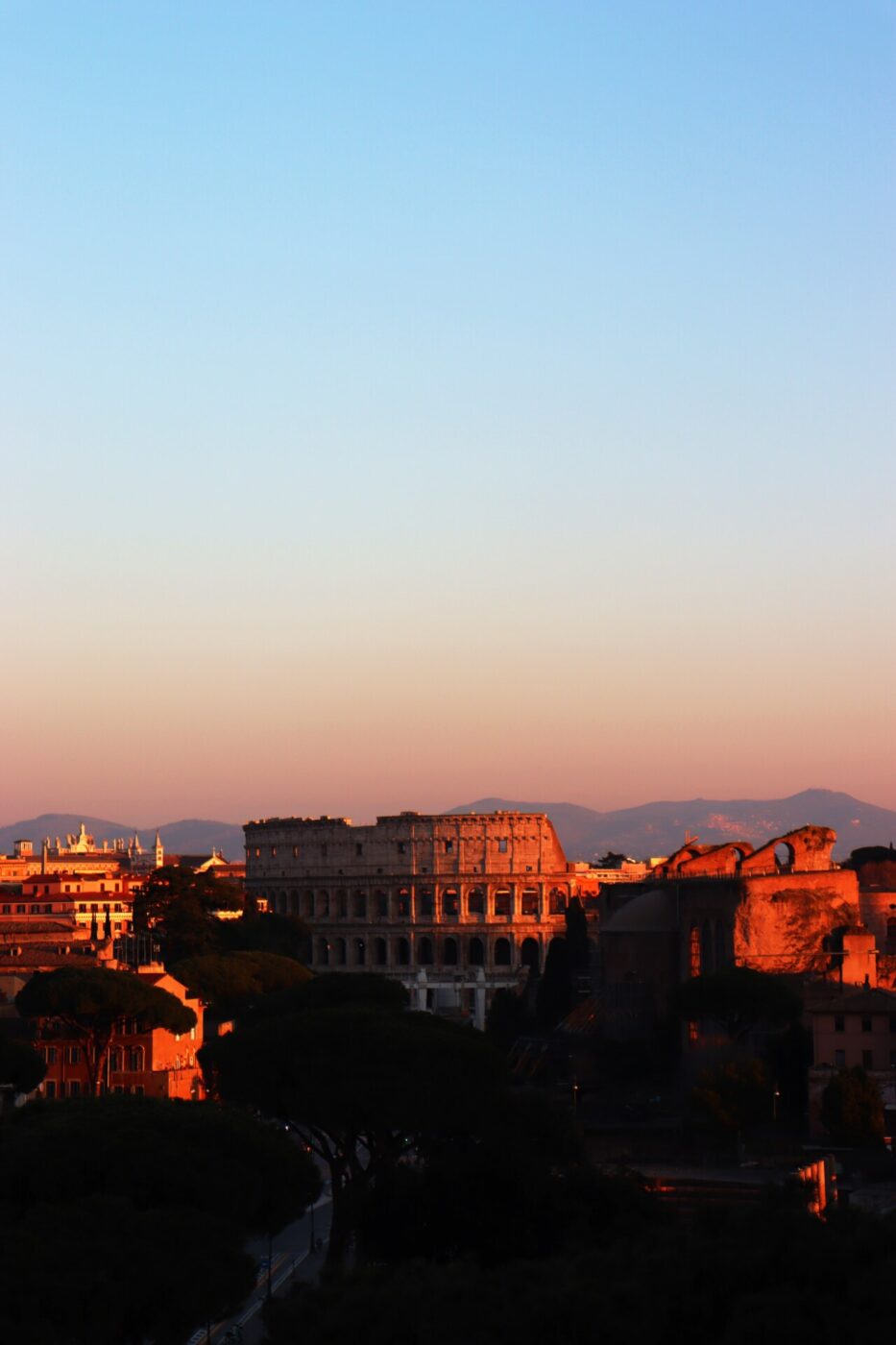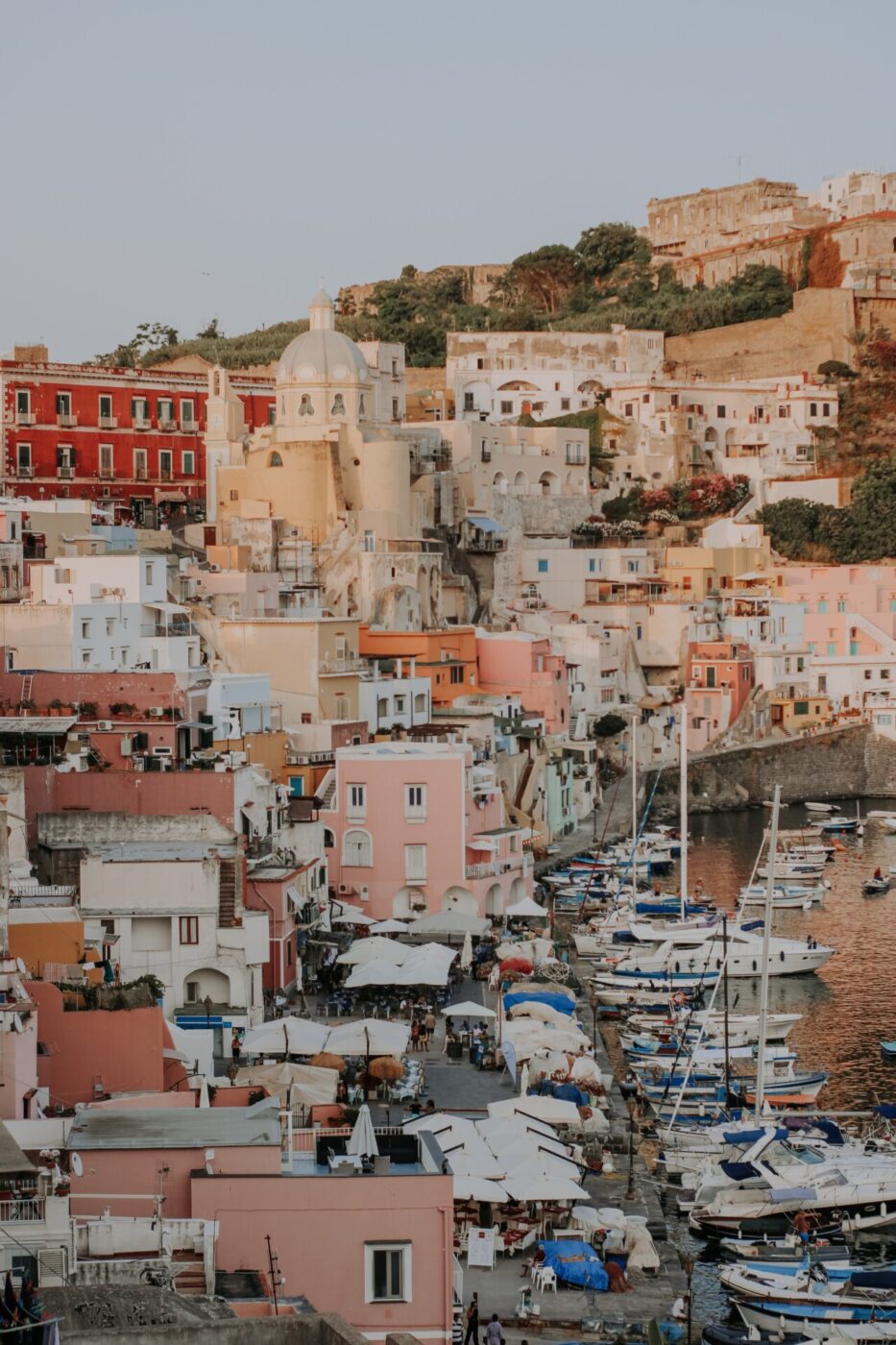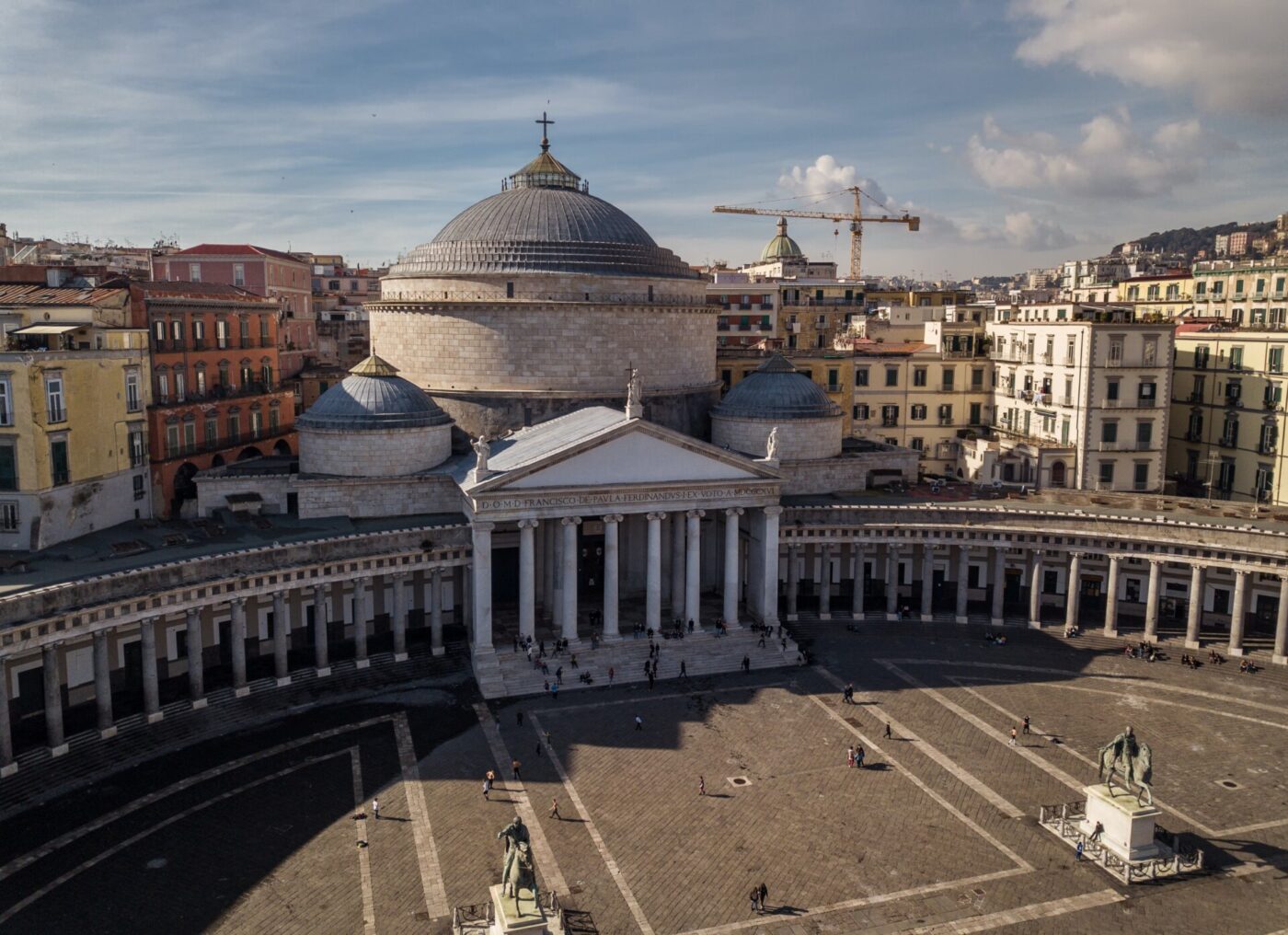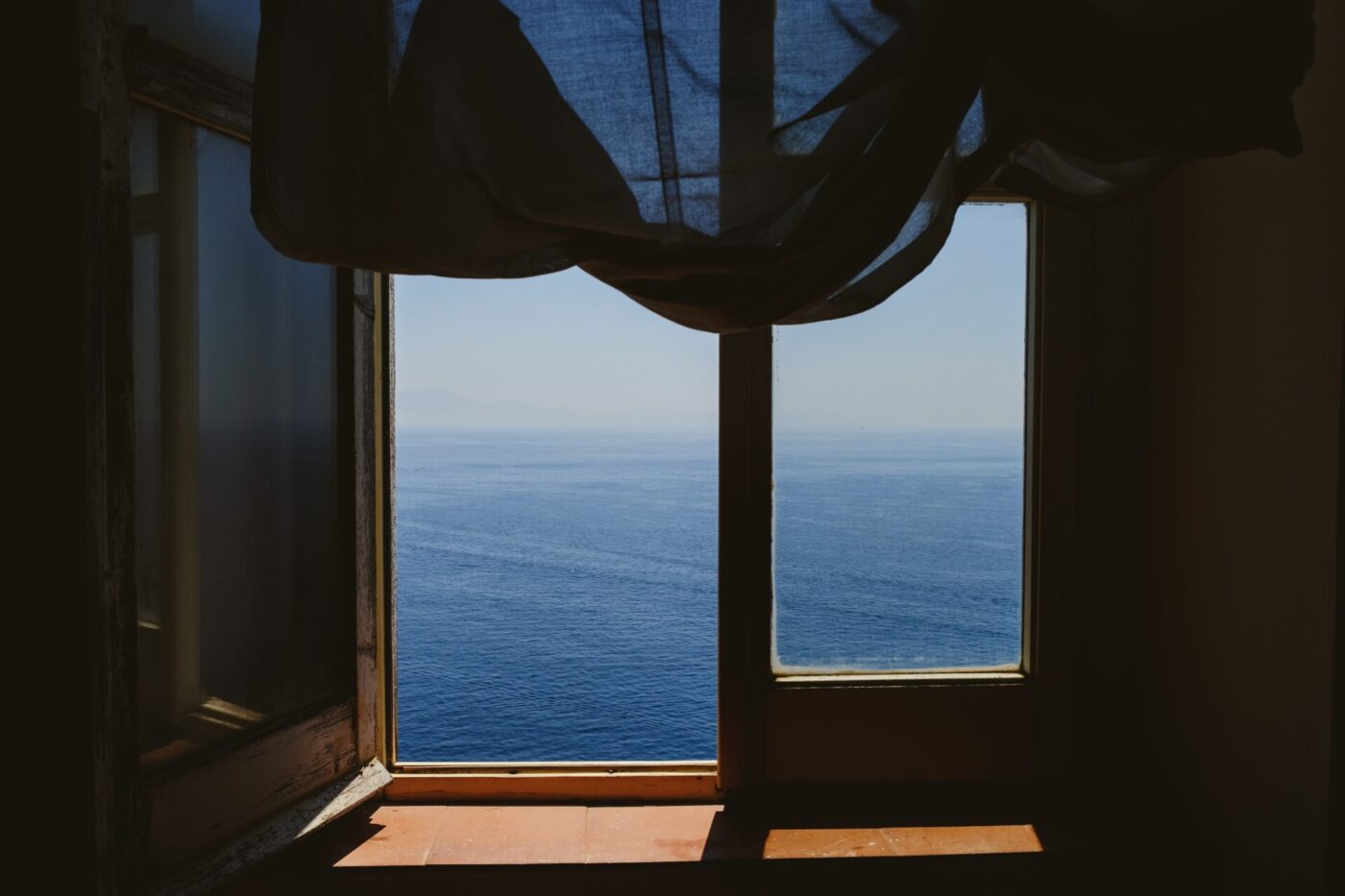As charming and cinematic as it might be, Italy is too often the subject of tired stereotypes on screen (something we’ve discussed at length here). Think of the most recent–and usually American–movies set in the Bel Paese, and you won’t help but notice a string of predictable patterns emerge: cheesy romance and macho sexyness; extreme gesticulation and coppola hats; pizza and spaghetti as the only food Italians seem to eat; and restaurants whose tables only come with chequered paper cloths.
That’s all to say: there are a lot of bad movies about our beloved country.
Luckily, though, there’s also plenty of great ones. And guess what? None of them are about cliche versions of the boot-shaped country, damsels in distress, or cringe celebrations of pizza, pasta, and baba.
Featuring subtle stories and complex characters, stunning backdrops and clever plotlines, these works offer instead unforgettable screen moments and evocative escapism, showing Italy for what it is: a beautiful, layered, contradicting place.
Here’s a round-up of seven films we particularly like. We haven’t included the classics—you already know La Dolce Vita, Rocco e i suoi Fratelli and Ladri di Biciclette are some of the greatest movies ever made—but opted instead for smaller gems we keep coming back to. Add them to your watch list, and prepare to get carried away–no pasta or mandolini involved.
Cinema Paradiso (1988)
Set in the north-west of Sicily (though the village of Giancaldo is actually fictional), Giuseppe Tornatore’s Cinema Paradiso is too many things to count: a heart-rending snapshot of small-town living in post-World War II Italy, a homage to the magic of cinema, and a nostalgia-filled story of childhood and friendship. Salvatore (Jacques Perrin), a famous film director, returns to his hometown for the funeral of the local theatre’s film projectionist, Alfredo (Philippe Noiret), and begins reminiscing about his past in a series of flashbacks. As a young kid (Salvatore Cascio), the filmmaker struck an unexpected, ultimately life-changing bond with the old projectionist, who worked in the cinema booth of their borgo, where movies were censored by the local priest and whose interior was designed to look like a church. We see him learning to fall in love with cinema, but also making the booth his home away from an indifferent home.
From the role of religion in the south to the sense of camaraderie that emerges among the cinema patrons as they line up faithfully night after night to watch the movies, Cinema Paradiso feels authentic, if a little too melodramatic at times, in the way it portrays a specific time and place in Italian history, and the characters that inhabit it. Above all, it dares the audience to dream, without falling back on trite tropes.
La Grande Bellezza (2013)
A love letter to Rome, Oscar-winning La Grande Bellezza is a pure sensual overload of beauty and richness, decadence and languor. It shows the Eternal City in all its glory thanks to stunning photography, evoking its charm in ways few other movies have ever matched–but the movie shows the capital’s ugliness, too (the booming, brassy, ultimately shallow parties that dot the movie; a botox doctor in a Renaissance palazzo, who’s treated by his patients as if he were the reincarnation of Michelangelo; an uncomfortable performance art interlude serving as social satire for the emptiness of the wealthy).
Tony Servillo plays Jep Gambardella, an ageing man-about-town at the centre of Rome’s fashionable nightlife and a writer who doesn’t really write. He’s famous for having published one promising novel in his 20s, but, more than that, for knowing everyone who matters. At 65, he’s content with himself until an unexpected event makes him look back at all he has loved and all he has wasted, and wonder whether there’s more to life than what he already knows.
Besides the many fantastic characters that populate Jep’s world, the witty musings on art, beauty and culture, and the slew of compelling ideas doled out throughout the movie, what we love about this particular Paolo Sorrentino feature is the way it depicts Rome as both fact and fantasy–a place of both religious power and criminal undertakings, history and corruption. It’s an honest and unflinching representation–something you don’t often see on screen.
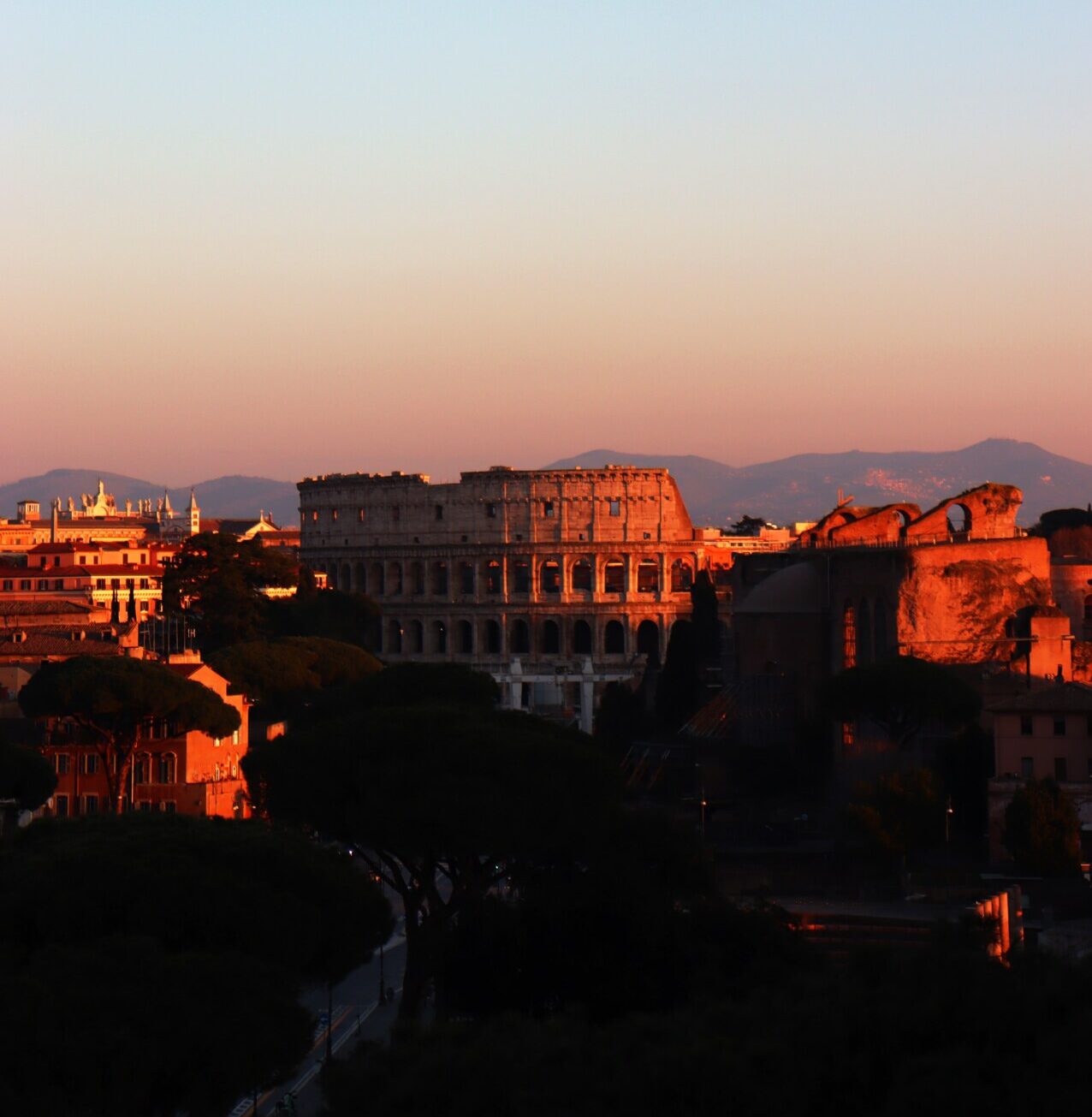
Il Postino (1994)
A good-hearted little film with far-reaching depths, Il Postino is a gentle tale of fate, love, friendship and poetry that feels as ingenious and emotional today as it did when it came out almost 30 years ago. Set in an unspecified location–shooting was actually split between gorgeous Salina, in the Aeolians, and uber-picturesque Procida, the tiny island off the Gulf of Naples—the film tells the story of humble Mario (the great Massimo Troisi), whose life on a quaint Italian isle changes when the local postmaster hires him to deliver mail to the house of a new arrival, exiled Cuban poet Pablo Neruda (Philippe Noiret). Mario grows fascinated by Neruda, and the pair develop a friendship that’ll forever leave an impression on the shy postman.
The stunning backdrops; nuanced portrayal of humanity thanks to very natural, passionate performances; and startlingly insightful observations from “uncultured” Mario himself, such as “the whole world is a metaphor for something,” make Il Postino a spellbinding movie you’ll never tire to rewatch–and be enchanted by–time and again.
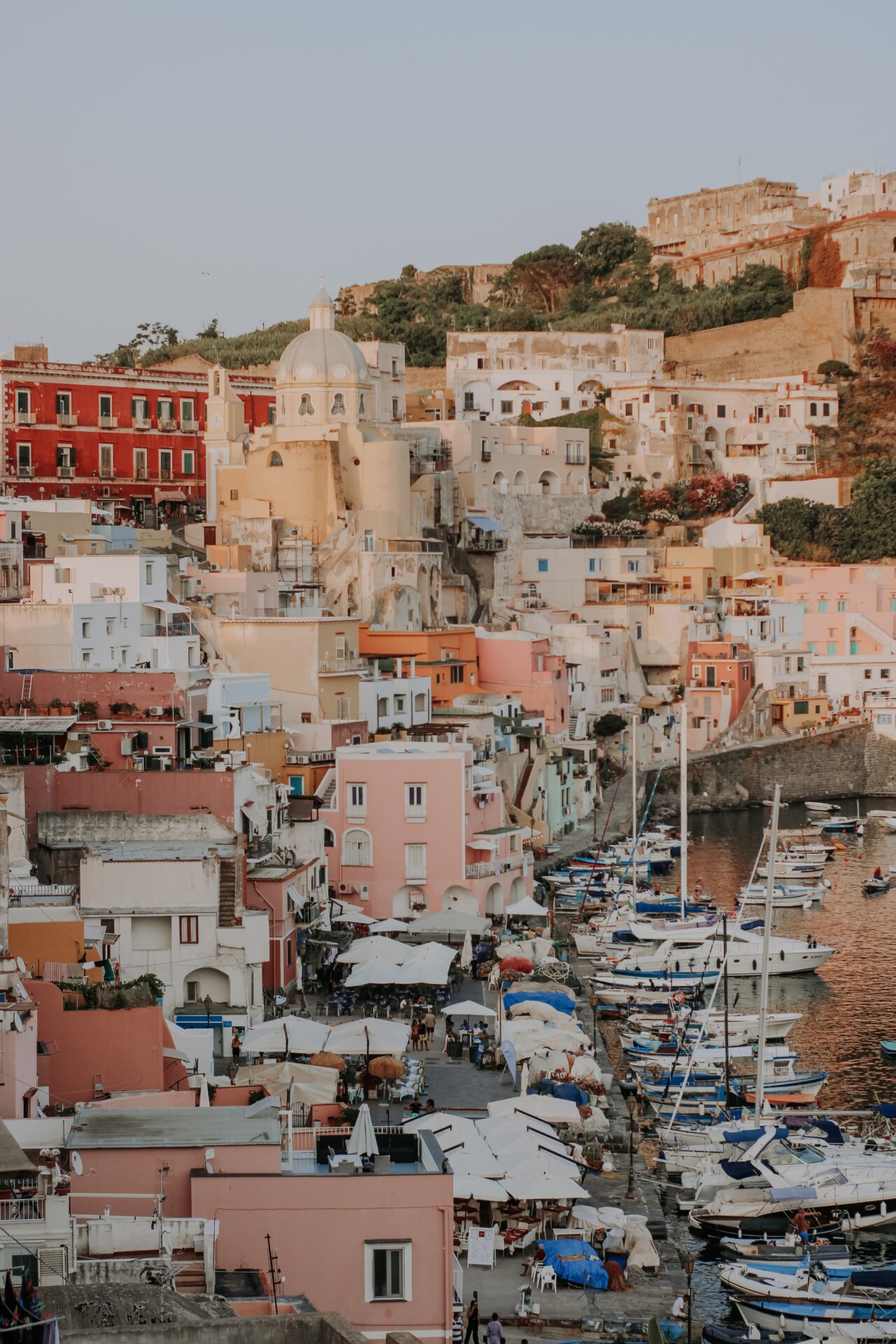
Call Me By Your Name (2017)
It’s the summer of 1983, and 17-year-old Elio Perlman (Timothée Chalamet) is spending the days with his family at their 17th-century villa “somewhere in northern Italy” (Lombardy, to be precise). There, he meets Oliver (Armie Hammer), a handsome doctoral student who’s working as an intern for his father. At first, the two seem completely different, but eventually a life-changing romance blossoms between them.
A coming-of-age story told with powerful intimacy by director Luca Guadagnino, the movie shines not just for its depiction of young love and sensual discovery, but also for how it captures the lushness of a perfect, if fleeting, Italian summer: the warm skies and gentle breezes, the tree-lined roads and streaks of sunlight. Add to that the 17th-century Villa Albergoni where the movie is set and the many charming locations that pop out throughout the movie–Crema’s Piazza del Duomo, where the two have their first conversation, Fontanile Quarantina, where they go swimming after a long cycle ride, and Cascate del Serio, the waterfall where they hike in their last days–and you see why it’s so easy to get swept away. Oh, and did we mention the great soundtrack that doesn’t fall back on overheard songs like “Bella Ciao”, but highlights a cluster of indie artists instead?
The Hand of God (2021)
Director Paolo Sorrentino’s film The Hand of God is a semi-autobiographical coming-of-age story set in his hometown of Naples during the 1980s, when the city was captivated (and given hope) by the arrival of Diego Maradona to the Napoli football team. The film beautifully captures the gritty realism and the faded grandeur of the city, in a way that’s similar to how the director’s The Great Beauty showcased Rome. There are lots of scenes where nothing really happens and the focus is more on the characters and their surroundings rather than on the plot–aunt Patrizia stretching out naked on the deck of a boat, an irascible matriarch in a fur coat biting into a ball of mozzarella as if it were the only thing that matters in the world–but it’s exactly those moments that make this a remarkably intimate film that’s way more rich and expressive than many other more commercial dramas. It’s not a perfect movie, but as a review in the British newspaper The Independent aptly summed up “whatever you think of The Hand of God, you’ll be Googling one-way tickets to Naples by the end of it.”
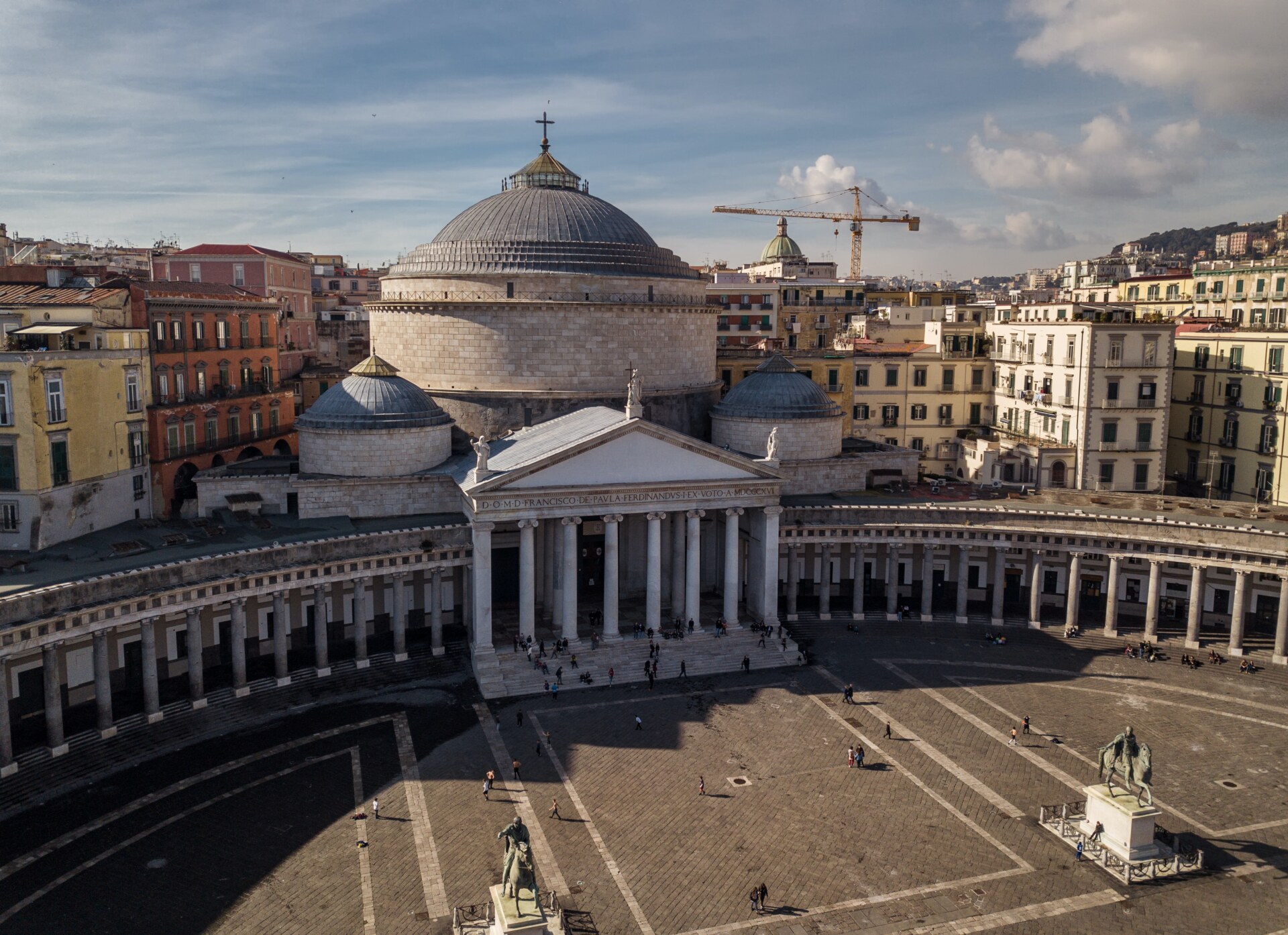
Piazza del Plebiscito, Naples
Il Gattopardo (1963)
A lavish historical drama made on a colossal budget (for the time) and with the most indulgent ball scene ever filmed (it goes on for 45 minutes), Luchino Visconti’s Il Gattopardo is not only a cinematic masterpiece, but one of the most successful films to have captured the changing times and society structure of late 19th century Italy–not to mention Sicily in all its grand splendour and unruly landscape. The plot faithfully follows Giuseppe Tomasi Di Lampedusa’s book by the same title (one of the greatest Italian literary works of the 20th century), recounting the story of an aristocratic Sicilian family adapting to the sweeping social changes that undermine their way of life as Garibaldi’s troops begin the unification of Italy in the 1860s. Along the way, it portrays the passing of feudalism and the advent of modernity; the falling of the elite and climbing of the middle class; and the breaking with traditions to ensure the continuity of one’s influence (just to name some of its themes!). Despite having been a key moment of the boot-shaped country’s history, the unification of Italy has hardly found the right space on screen, and Il Gattopardo is a splendid, lavish exception to that.

